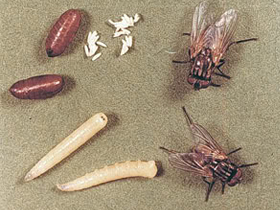
Frogs are hatched in water, where they live for a while as tadpoles. They then emerge onto land, after growing limbs and losing their tails, in a process known as metamorphosis. Some people regard metamorphosis as evidence of evolution, but the fact is that metamorphosis has nothing whatsoever to do with evolution.
The only developmental mechanism that the theory of evolution proposes is mutations. Metamorphosis, however, does not take place through such chance events, but these changes are already programmed in the frog's genetic data. In other words, when a tadpole is first hatched, it is already determined that it will eventually undergo a process of change and come into possession of a frog's body suited to life on land.
Recent research has shown that metamorphosis is a very complex process controlled by different genes. In this process, for example, during the disappearance of the tail alone, "more than a dozen genes increase their activity," according to the journal Science News.41
Evolutionist claims of a "transition from water to land run along the lines that fish with the genetic data for total life in water evolved by chance into terrestrial amphibians as a result of random mutations. For that reason, metamorphosis represents evidence that actually undermines evolution, rather than supporting it. The slightest error in the process of metamorphosis will leave an animal crippled or dead, so there can be no question of a random change. Metamorphosis must be completed in a flawless manner.
It is impossible to maintain that such a complex process, one that allows no margin of error, emerged through random mutations, as the evolution theory claims.
41."A surprising tale of a frog's tail- research into a tadpole's metamorphosis into a frog," Science News, July 17, 1999, p. 43.


